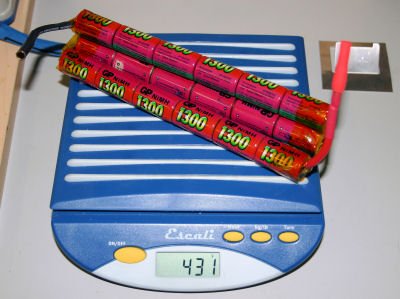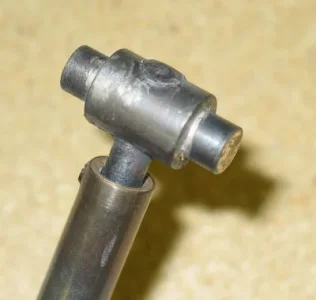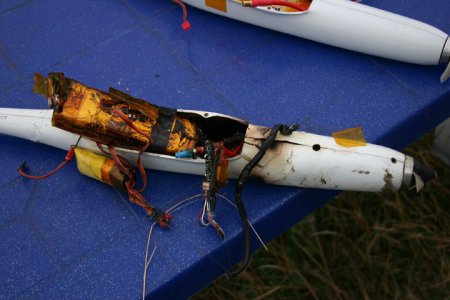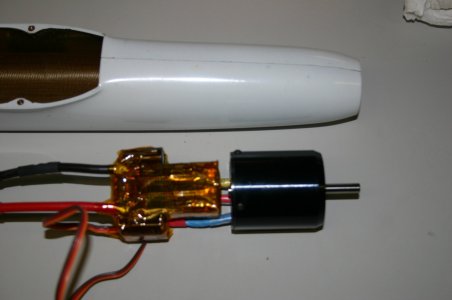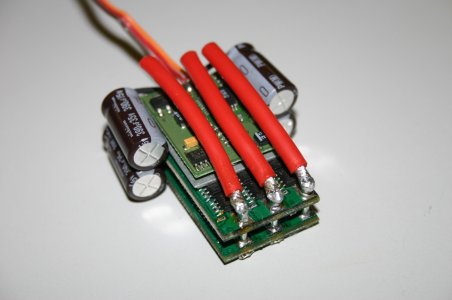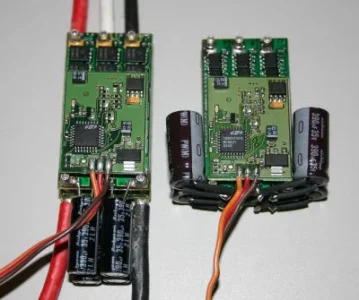Yes & no. Maybe not in your league, but happy to share what little I know when we get together.
I guess I could say old school now, back in the NiCD & NiMH 'round cell' racing days 2004-2006 I made many packs which were end-to-end soldered with hammerhead tip. Anywhere from 7 to 18 cells depending on the configuration (other classes had 30-40 cells). So no inter-cell tabs except for the very end cells & the tabs were 8-10awg equivalent silver/copper bars. In this application direct inter-cell solder was required for minimum resistance, weight & compact form factor. The factory shrink was stripped & replaced with Kapton to take the heat (gold colored stuff). When Lithium polymer became legal for competition in 2008, it was more buy & fly mode. The packs were, and continue to be, factory made to whatever voltage/capacity/S&P (Series & Parallel) cell configuration, c/w pre-attached balancing harness etc. So our only job was to solder the leads for ESC & abuse them LOL.
I'm not that familiar with the robots/scooters/cars actually, but judging by some of the pictures of 'round cell' packs, eve though they are lithium chemistry, look like array bricks of cells in special trays & then those bricks are inter-wired to build up requisite pack voltage. Some of the joiner bars look quite intricate so I'm actually not sure if they are spot welded or somehow 'fit' because the cells look relatively normal. I'm also not sure how prevalent lithium polymer (rectangular packs) are in e-machines, but guessing they are similar to RC factory packs & then built up with bus bars or something? If you show me what you have for components or what the vision is, I can do what I can to pontificate & drink your beer HaHa. One potential difference is my stuff was 100-250 amps dictated by the motor wind & other factors, whereas I think the robots & such are higher voltage & (relatively) lower cell current. If so that likely translates into different, less onerous cell joinery techniques. I also have a buddy who was big into robot competitions, so we can swab him for intel too. I still want to see your beast in action!
I guess I could say old school now, back in the NiCD & NiMH 'round cell' racing days 2004-2006 I made many packs which were end-to-end soldered with hammerhead tip. Anywhere from 7 to 18 cells depending on the configuration (other classes had 30-40 cells). So no inter-cell tabs except for the very end cells & the tabs were 8-10awg equivalent silver/copper bars. In this application direct inter-cell solder was required for minimum resistance, weight & compact form factor. The factory shrink was stripped & replaced with Kapton to take the heat (gold colored stuff). When Lithium polymer became legal for competition in 2008, it was more buy & fly mode. The packs were, and continue to be, factory made to whatever voltage/capacity/S&P (Series & Parallel) cell configuration, c/w pre-attached balancing harness etc. So our only job was to solder the leads for ESC & abuse them LOL.
I'm not that familiar with the robots/scooters/cars actually, but judging by some of the pictures of 'round cell' packs, eve though they are lithium chemistry, look like array bricks of cells in special trays & then those bricks are inter-wired to build up requisite pack voltage. Some of the joiner bars look quite intricate so I'm actually not sure if they are spot welded or somehow 'fit' because the cells look relatively normal. I'm also not sure how prevalent lithium polymer (rectangular packs) are in e-machines, but guessing they are similar to RC factory packs & then built up with bus bars or something? If you show me what you have for components or what the vision is, I can do what I can to pontificate & drink your beer HaHa. One potential difference is my stuff was 100-250 amps dictated by the motor wind & other factors, whereas I think the robots & such are higher voltage & (relatively) lower cell current. If so that likely translates into different, less onerous cell joinery techniques. I also have a buddy who was big into robot competitions, so we can swab him for intel too. I still want to see your beast in action!

